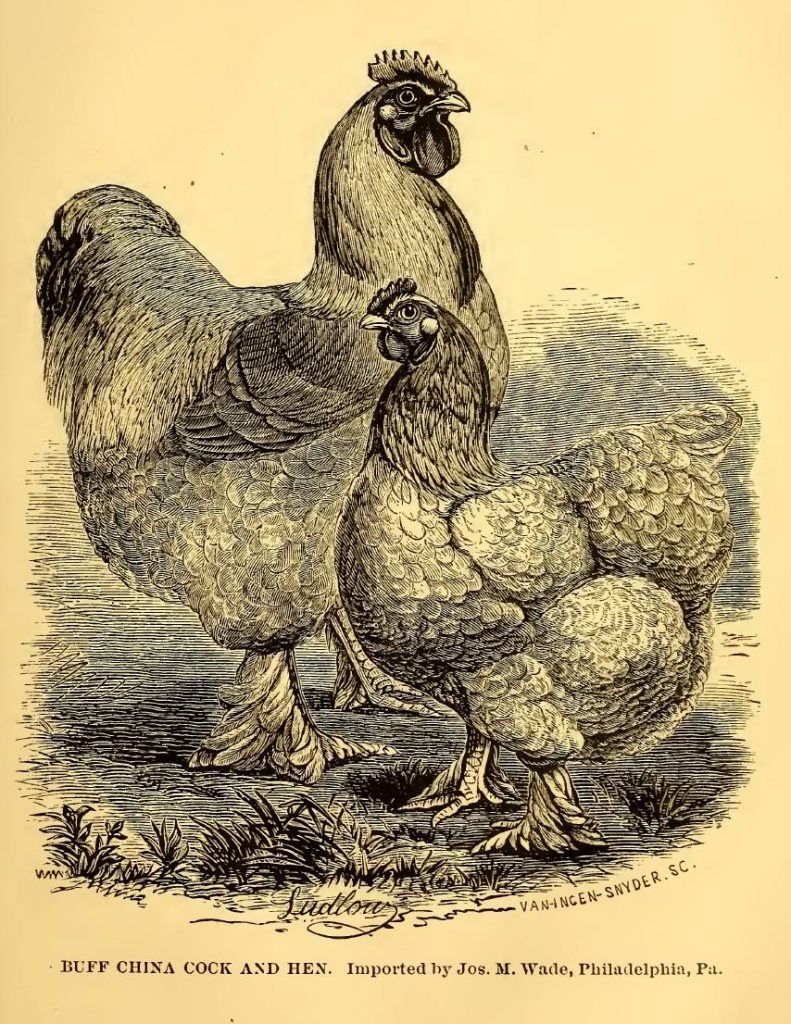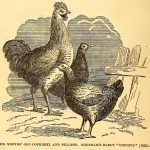This article, Breeding Chickens to Increase Egg Production & Utility General Rules, is based on Edgar Wallace’s article in his 200 Eggs a Year Per Hen: How to Get Them from 1899. It is just as relevant today and hopefully of use to readers who wish to try breeding chickens for themselves.
One example is you may wish to take a pure breed that has been selected for style and conformation and then increase egg production.
The Three Laws or Principles Underlying Reproduction
Breeders now recognize three laws or principles underlying the whole subject of reproduction.
1. Inheritance.
By inheritance is meant the tendency of parents to repeat themselves in their offspring, and of offspring to resemble their parents. It is because of this law of inheritance that anything like scientific breeding is possible.
If parents did not have a proclivity to repeat themselves in their offspring and if offspring did not have a proclivity to resemble their parents, the breeder might well abandon his task as hopeless.
2. Variation.
By variation is meant the tendency of offspring to differ from the parents. The infant is never an exact copy of the father or mother; it possesses an independent individuality of its own.
Thus the product of A and B is never A or B, even AB or BA; it is AB plus X; in other words there enters in an unknown element to influence the result.
It is this law of variation that makes it possible to improve the species; the parents may be so mated that the offspring will be better and stronger than either one of them.
3. Reversion.
There is a propensity to go backward as well as forward to return to some primitive type. Where mating is indiscriminate the tendency to reversion is very strong.
Breed From Your Best Birds
We have now reached the point where it is possible to formulate some rules for breeding. The first is this : Breed from your best birds. By best birds I mean birds that will best enable you to reach your ideal.
If your ideal is beauty breed from birds that will give you beauty; if your ideal is utility breed from birds that will give you utility. We now see why it is so difficult to have a show bird and an egg bird in the same specimen.
The breeder must sacrifice somewhere either on the score card or the egg record. It is possible to have a good looker and a good layer in the same bird ; but I do not believe that it is possible to have a bird that will win in Boston, New York or Chicago, and at the same time lay 200 eggs a year.
The reader must make his choice. I have made mine. Utility first, beauty afterward. I like to see a beautiful bird as well-as anyone, but I can’t afford to breed for plumage and points.
My White Wyandottes sometimes show some brass; they stand higher than I like; but they will lay summer and winter, hot or cold, wet or dry lay so that I sometimes fear they will lay themselves to death. They are a money-making proposition for me and for my customers, even if they cannot win at the big shows.
See Also:
Breeding Chickens - Selecting Stock
Cross Breeding Chickens - Importance of Crosses
Also in 200 Eggs a Year, Per Hen: How to Get Them
- Preserving Eggs
- What Breed are the Best Egg Layers
- Keeping Hens for Maximum Egg Production
- Breeding Chickens to Increase Egg Production & Utility General Rules
- Eggs in Fall & Winter
- More Eggs In Winter Tips
- The Trap Nest and Its Uses
- How to Build a Trap Nest Box for Hens – Free Plan
- Breeding Chickens – Selecting Stock
- Cross Breeding Chickens – Importance of Crosses
- Fertile Eggs & How To Get Them
- Poultry Manure A Valuable By-Product




